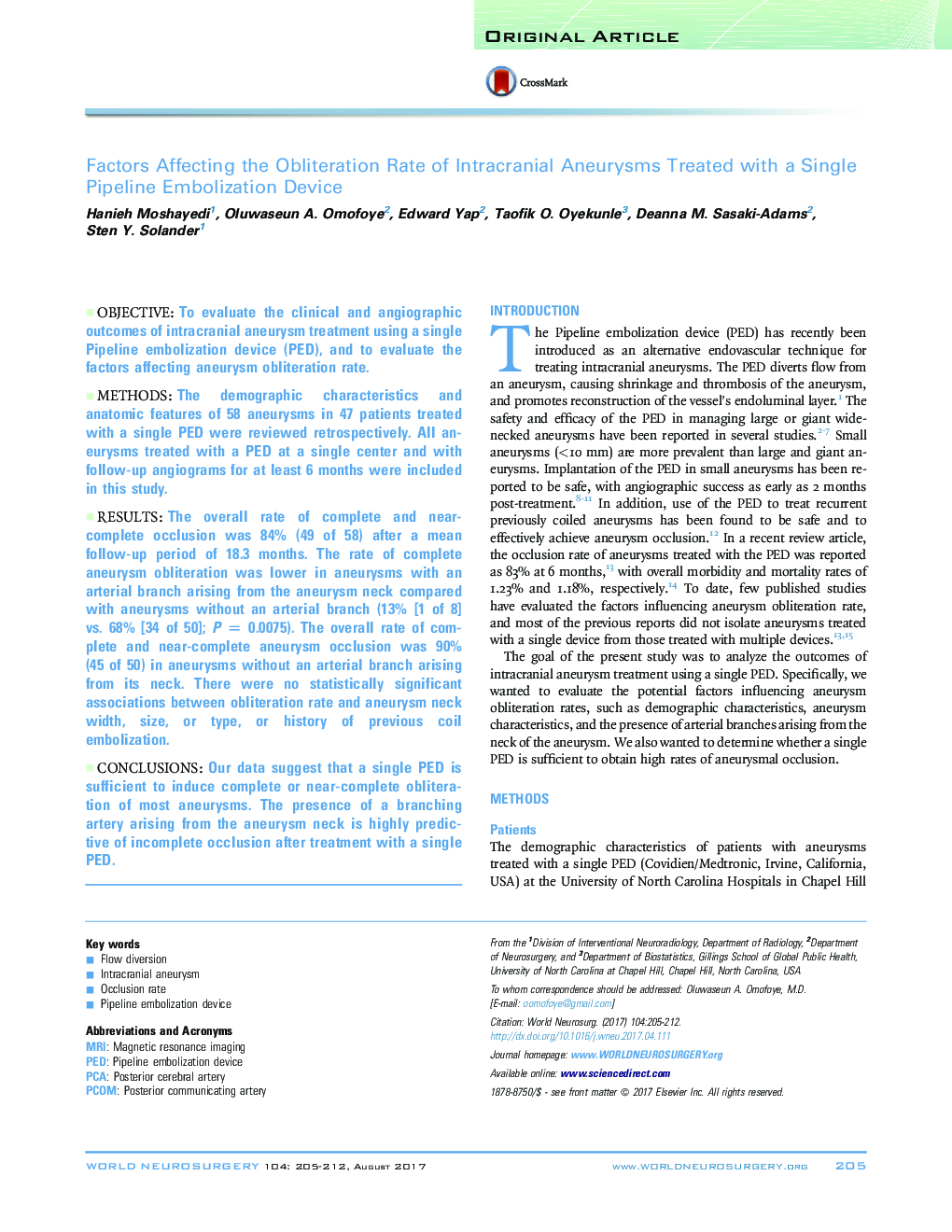| Article ID | Journal | Published Year | Pages | File Type |
|---|---|---|---|---|
| 5634419 | World Neurosurgery | 2017 | 8 Pages |
ObjectiveTo evaluate the clinical and angiographic outcomes of intracranial aneurysm treatment using a single Pipeline embolization device (PED), and to evaluate the factors affecting aneurysm obliteration rate.MethodsThe demographic characteristics and anatomic features of 58 aneurysms in 47 patients treated with a single PED were reviewed retrospectively. All aneurysms treated with a PED at a single center and with follow-up angiograms for at least 6 months were included in this study.ResultsThe overall rate of complete and near-complete occlusion was 84% (49 of 58) after a mean follow-up period of 18.3 months. The rate of complete aneurysm obliteration was lower in aneurysms with an arterial branch arising from the aneurysm neck compared with aneurysms without an arterial branch (13% [1 of 8] vs. 68% [34 of 50]; PÂ = 0.0075). The overall rate of complete and near-complete aneurysm occlusion was 90% (45Â of 50) in aneurysms without an arterial branch arising from its neck. There were no statistically significant associations between obliteration rate and aneurysm neck width, size, or type, or history of previous coil embolization.ConclusionsOur data suggest that a single PED is sufficient to induce complete or near-complete obliteration of most aneurysms. The presence of a branching artery arising from the aneurysm neck is highly predictive of incomplete occlusion after treatment with a single PED.
